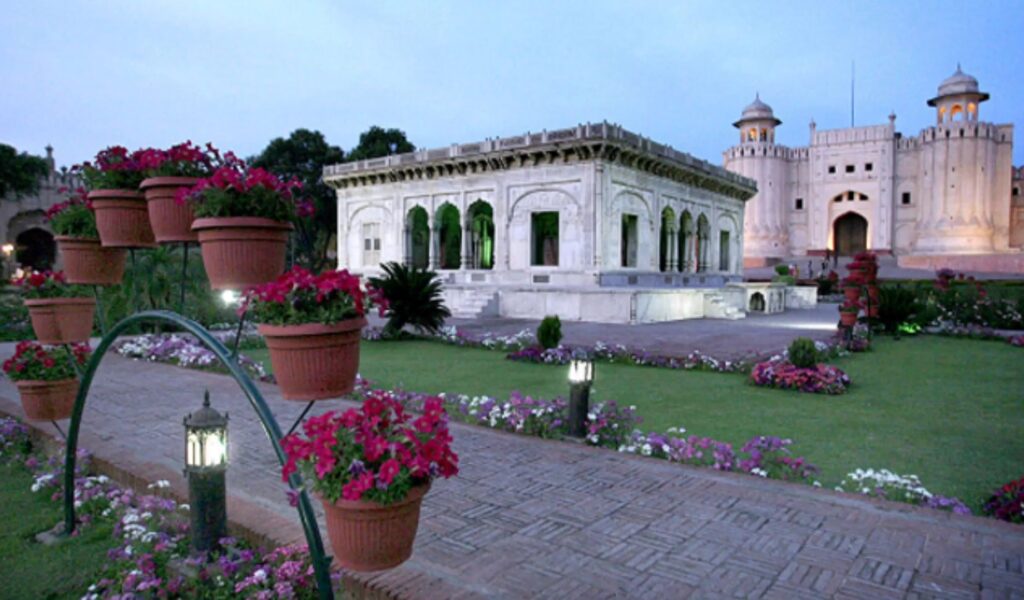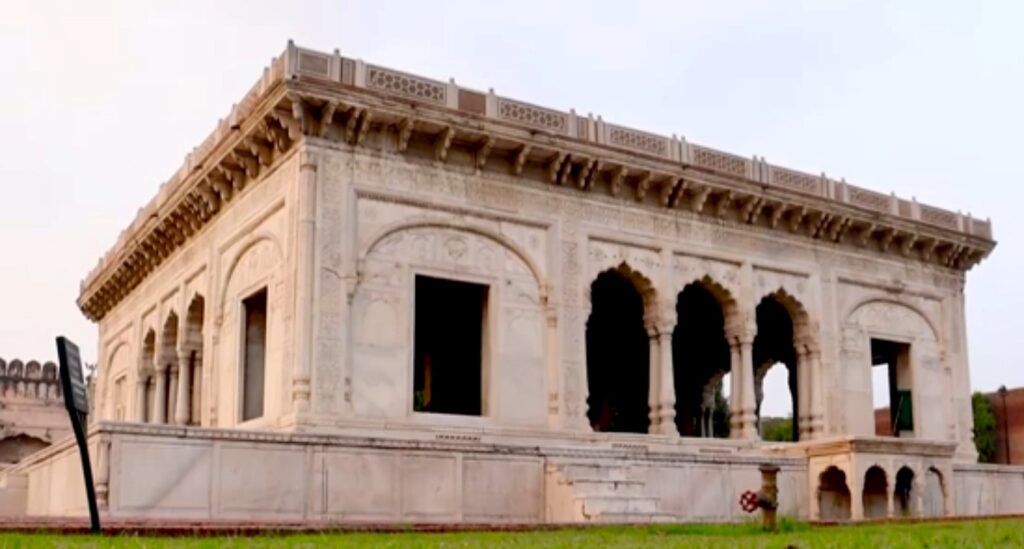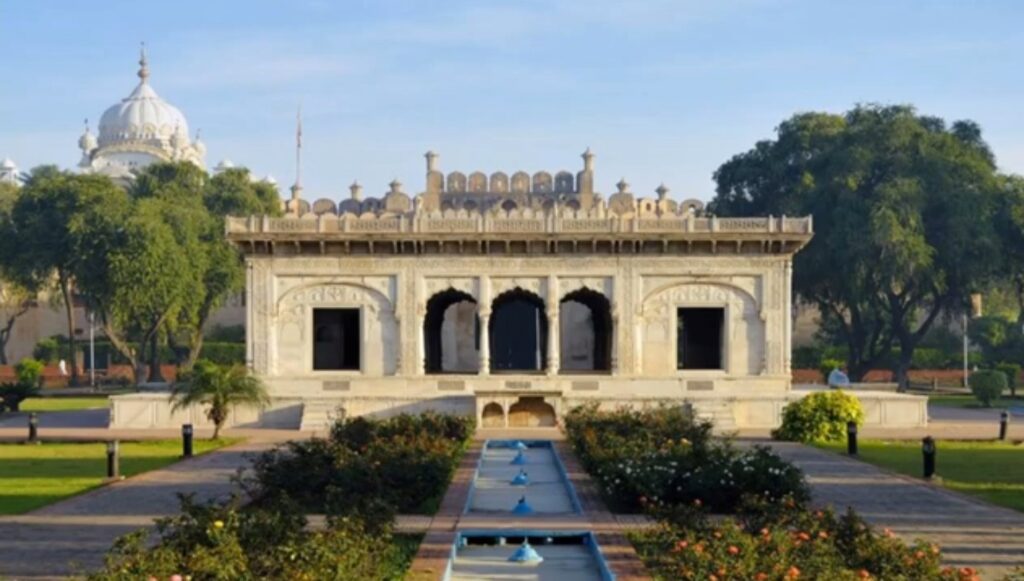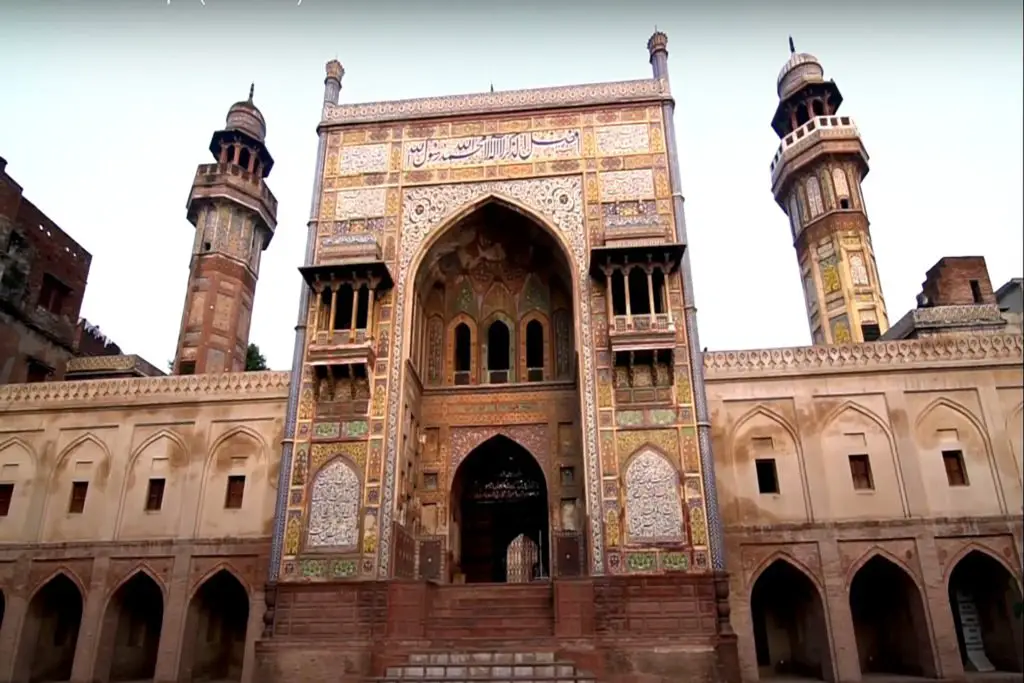Hazuri Bagh is a picturesque garden located in the bustling city of Lahore, in the province of Punjab, Pakistan. The garden is surrounded by notable landmarks such as the Lahore Fort, Badshahi Mosque, the Samadhi of Ranjit Singh, and the Roshnai Gate, which make it a popular tourist destination.
Hazuri Bagh History
Hazuri Bagh was built in the 19th century during the reign of Maharaja Ranjit Singh, who was a prominent Sikh ruler of the Punjab region. The garden was designed and constructed under the supervision of Faqir Azizuddin in the traditional Mughal style, with neatly laid out pathways, fountains, and lush green lawns.
The centerpiece of Hazuri Bagh is the Hazuri Bagh Baradari, a pavilion that was built by Maharaja Ranjit Singh in 1818. The baradari was constructed using marble that was vandalized from various mausoleums in Lahore and features elegant carved pillars that support the delicate cusped arches. The central area of the baradari, where Maharaja Ranjit Singh held court, has a mirrored ceiling that adds to the grandeur of the structure.
Over time, both the garden and the baradari suffered extensive damage during the Sikh wars, but were reclaimed and laid out according to the original plan during the British period. Unfortunately, the top story of the baradari collapsed in 1932 and was never rebuilt or restored.
Recreational Activities at the Hazuri Bagh Lahore

Apart from its historical and cultural significance, Hazuri Bagh also holds great importance for the people of Lahore. The garden serves as a recreational area for families and friends to gather, relax and enjoy the serene environment away from the hustle and bustle of the city.
Hazuri Bagh has undergone several transformations over the years. During the Mughal era, it was known as the “Ali Mardan Khan Bagh” after the Persian nobleman who designed it. Later on, the garden was renamed to Hazuri Bagh, which translates to “garden of the court,” after Maharaja Ranjit Singh used it as a venue for his court proceedings.
Despite this, Hazuri Bagh and its baradari remain a popular attraction for locals and tourists alike. Every Sunday afternoon, people gather in the garden to hear storytellers recite traditional Punjabi Qisse, such as Heer Ranjha and Sassi Punnun, and other Punjabi Sufi poetry. The garden’s tranquil atmosphere, coupled with its rich cultural heritage, make it an ideal place to relax and soak in the beauty of Lahore.
Adjacent to the garden lies the tomb of Muhammad Iqbal, a renowned poet and philosopher, and the tomb of Sikandar Hayat Khan, the last Premier of Punjab. These tombs are also popular tourist destinations and serve as a reminder of the rich cultural and historical legacy of the region.
In addition to its aesthetic appeal, Hazuri Bagh also holds significant historical events. It was the site of several battles and important events that have shaped the region’s history. The garden was used as a base for the British army during the Indian Rebellion of 1857, and it was also the site of the signing of the Treaty of Lahore in 1846, which ended the First Anglo-Sikh War.

Today, Hazuri Bagh remains an integral part of Lahore’s heritage and is a popular tourist destination. Visitors can take a stroll through the lush green lawns, explore the stunning Hazuri Bagh Baradari, and enjoy the traditional storytelling sessions that take place every Sunday afternoon.
In conclusion, Hazuri Bagh is a testament to the rich cultural heritage of the Punjab region. With its stunning Mughal-style layout and beautiful Hazuri Bagh Baradari, it is a must-visit destination for anyone interested in the history and architecture of Lahore.







